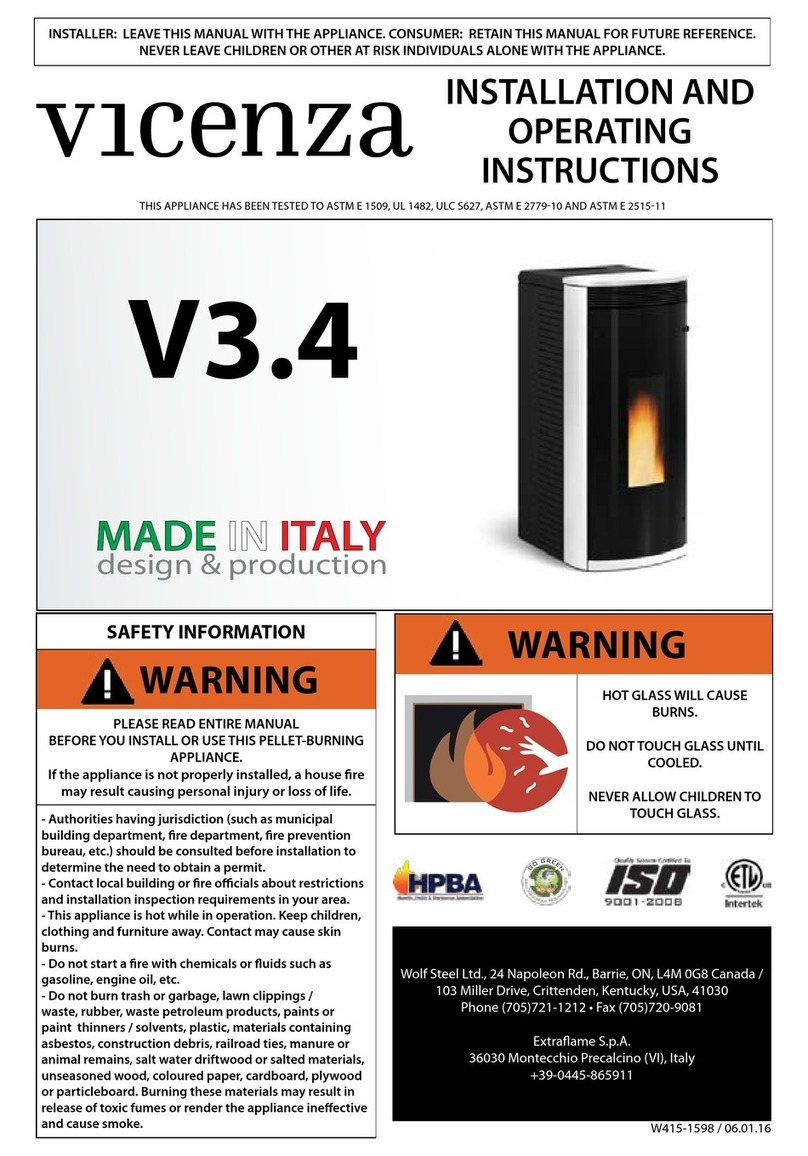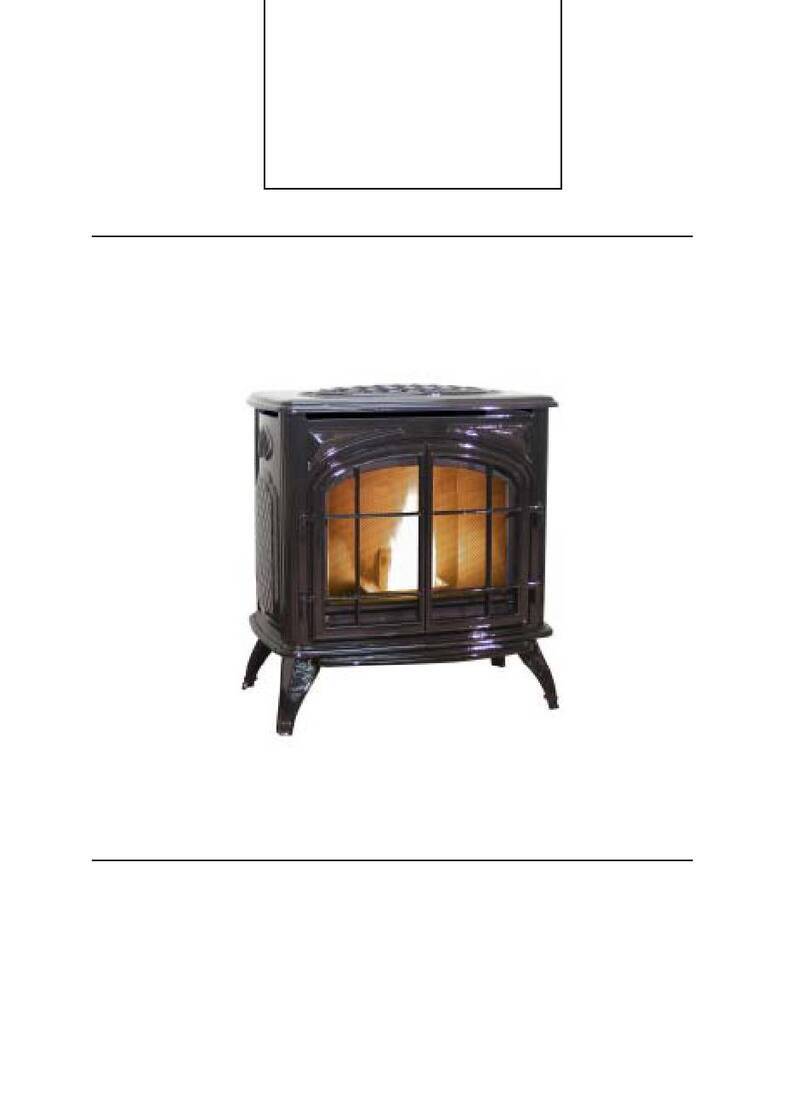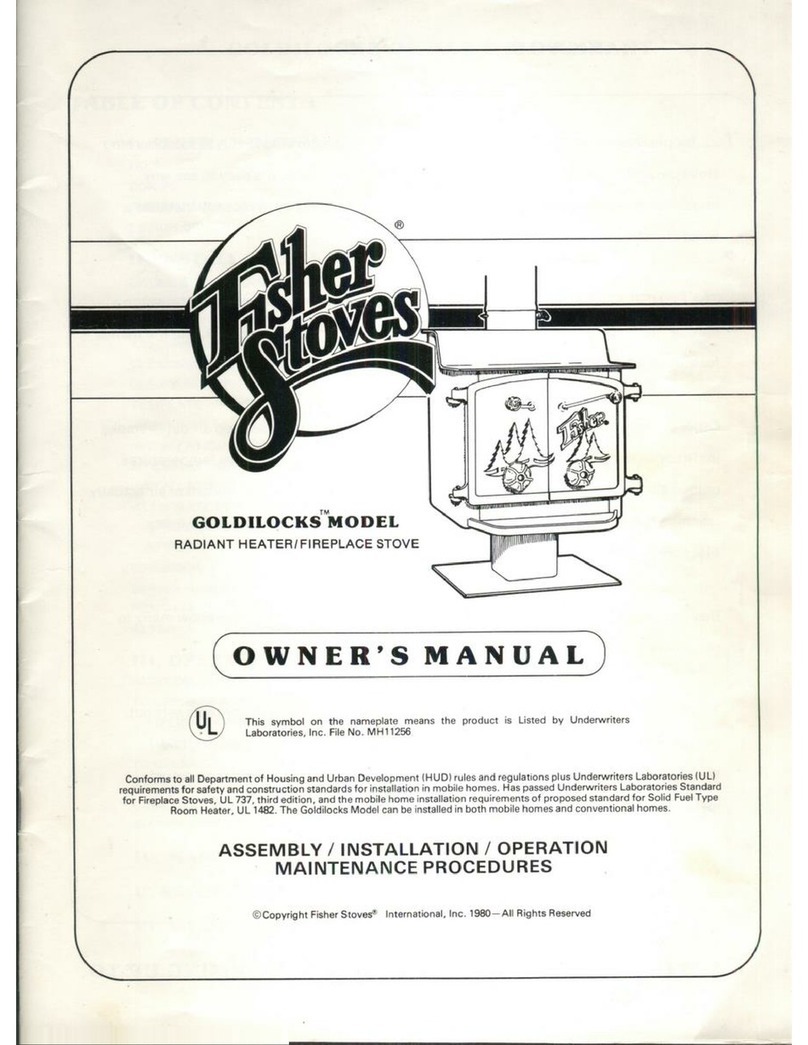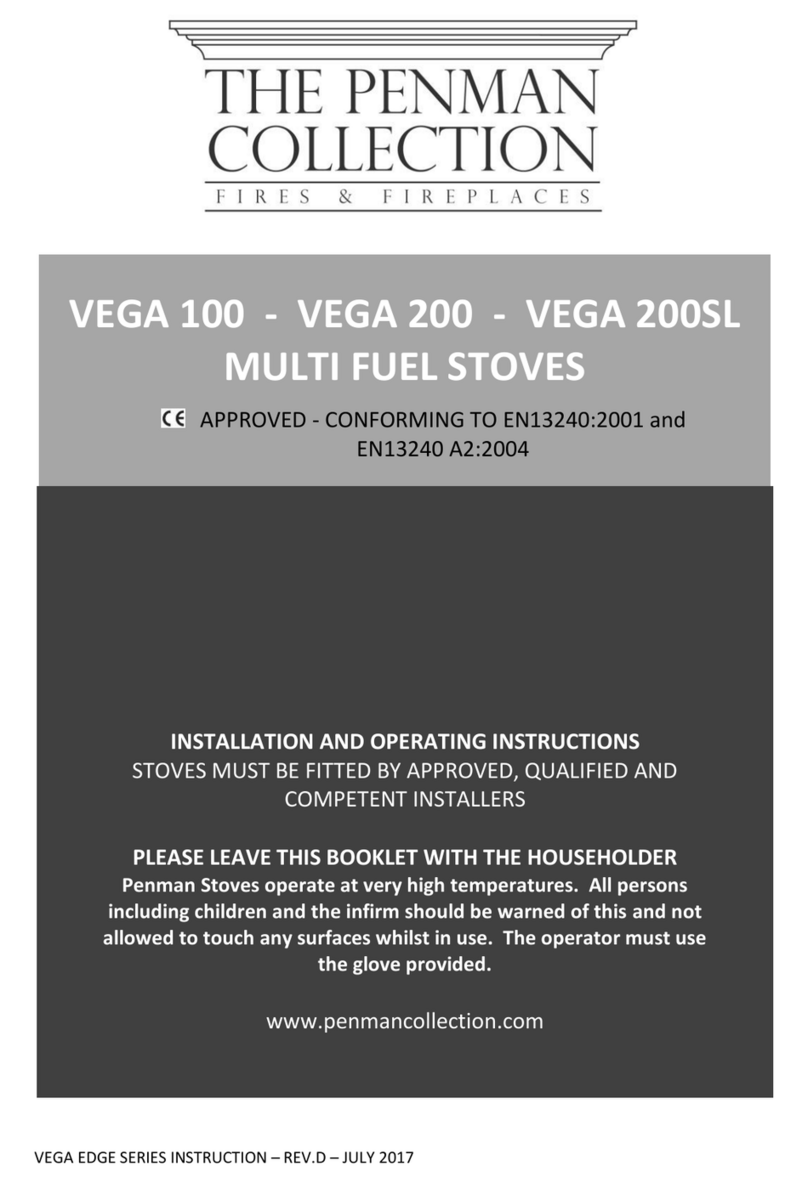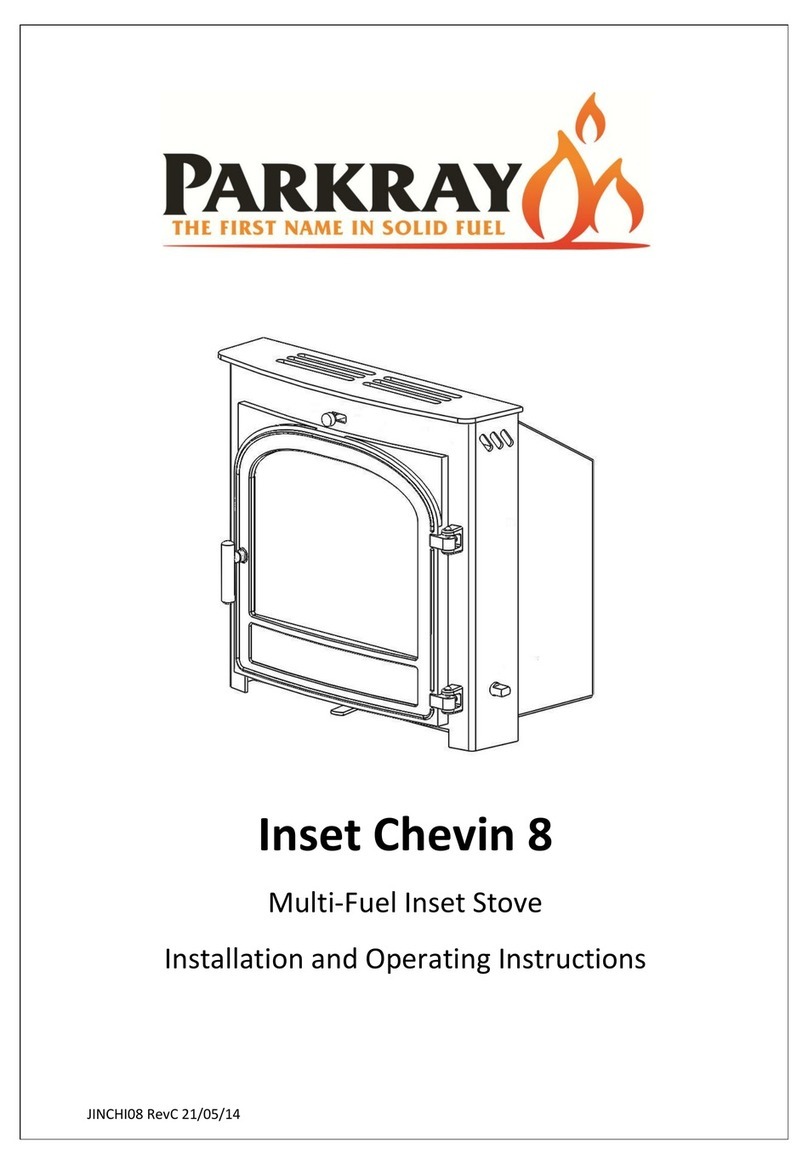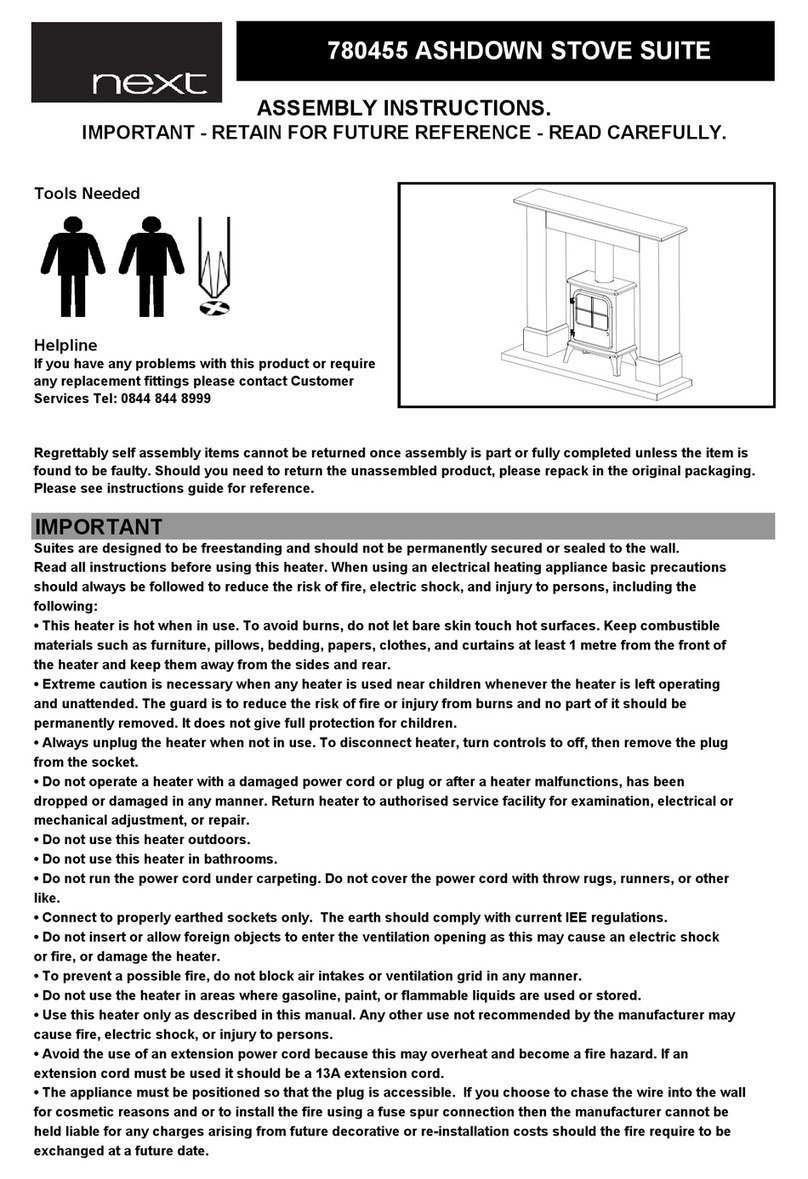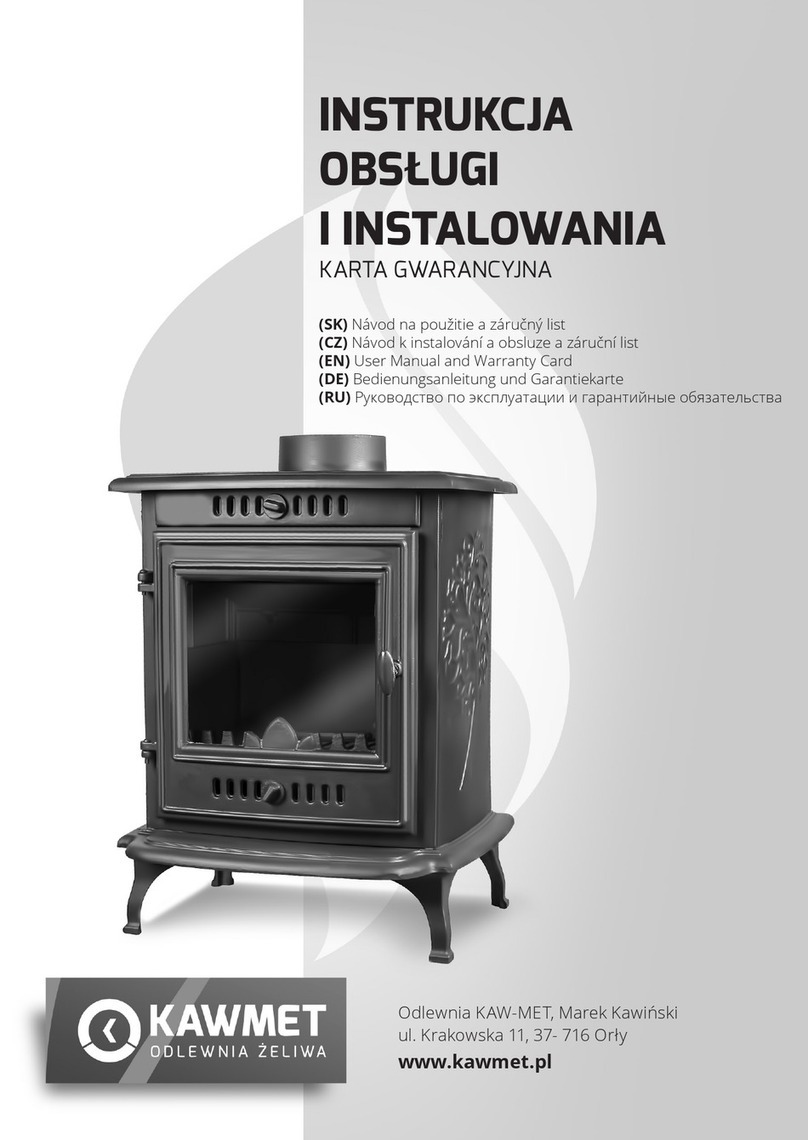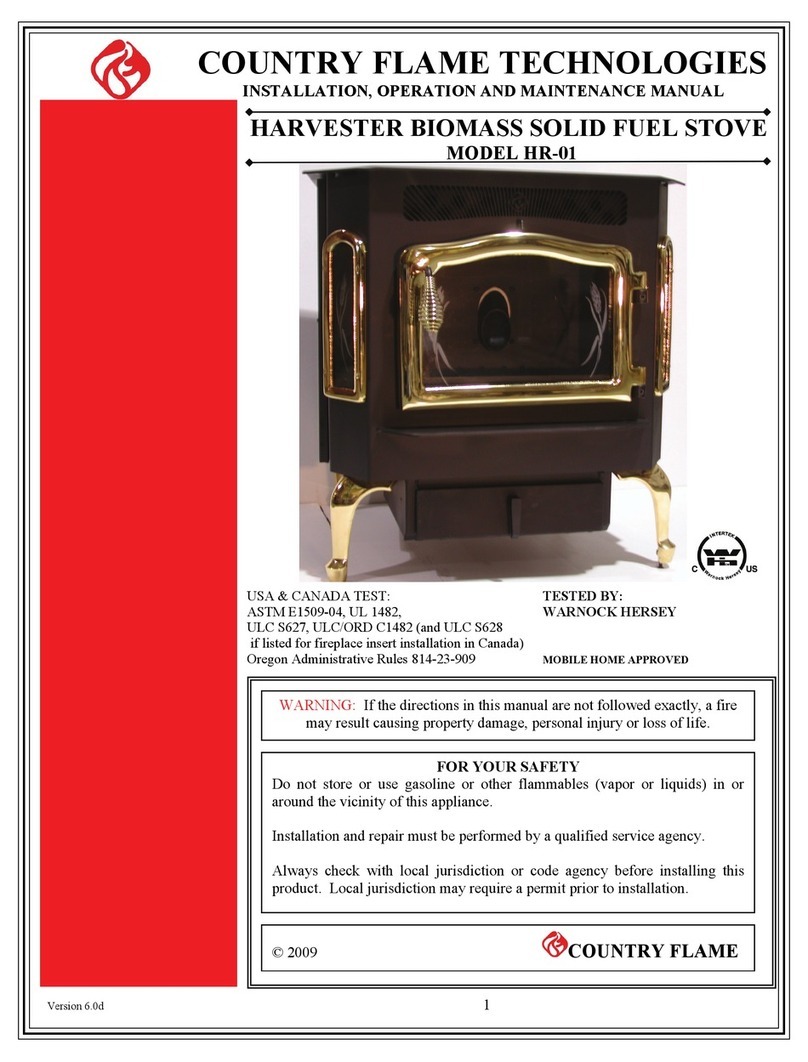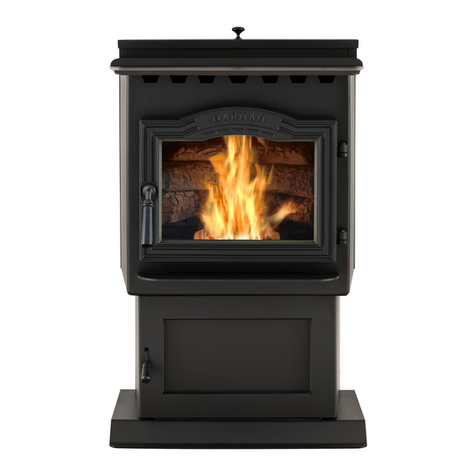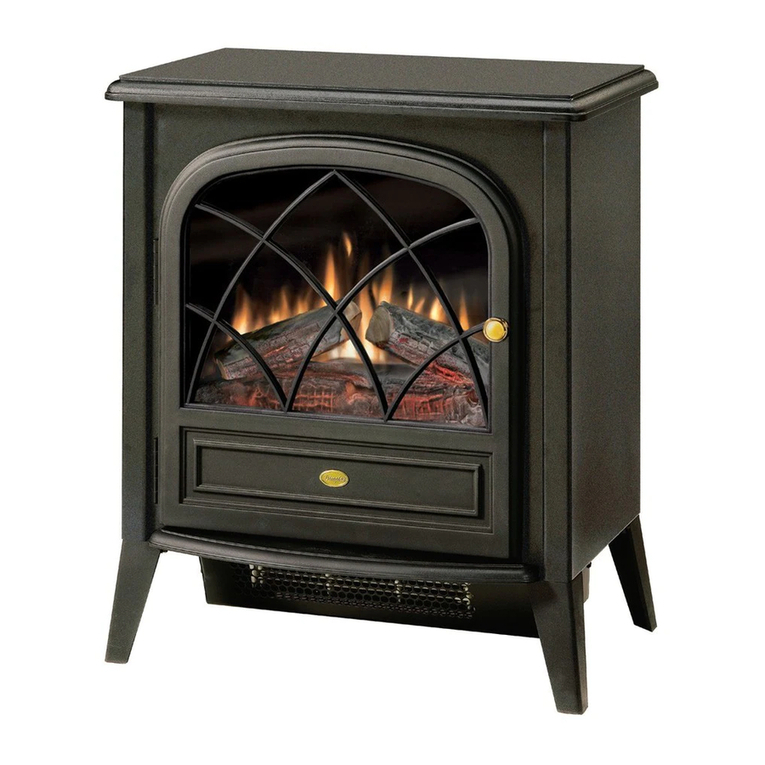provide combustion air and prevent the depletion of oxygen in the room. This need is more
prevalent in modern houses where drafts have been almost eliminated by double-glazing etc.
Our gas models have an oxygen depletion sensor, this switches off the gas supply to the stove if
the oxygen content in the room falls below the desired level. This is not possible with a multi-fuel
stove.
4. Your stove must be installed on a non-combustible hearth and with a gap of at least 600mm from
any combustible material. In front of the stove, to carpets or wooden floors there must be 300mm
of hearth. It is possible that on opening the door of the stove for a log or coal to fall out. Afender
must be fitted if the heart is flush with the carpet.
5. A properly built masonry or factory installed chimney, preferably with a height of 15 feet or more,
should ensure a consistent draught (draw) under a variety of weather conditions. This stove
requires a chimney (not the flue pipe) with a minimum diameter of 150mmm (6”). If the chimney
and cavity are larger, this may result is less than optimum performance to and extent where it may
required a liner to improve the draught (draw) and performance of the stove, certain cowls improve
the draught (draw) of a chimney. If the draught (draw) on the chimney is excessive, then a flue
damper will help to slow this down. An excessive draught (draw) may cause over firing and thus
the internal components of the stove to wear out quicker.
6. The flue spigot (pre fibre roped) provided with the stove can be fitted to the rear or the top of the
stove and must be tightly fitted to the opening. This is so that air is not drawn in at this point
which will affect the stoves performance.
7. To get the best transfer of heat from the stove into the room there are two factors to consider.
Firstly, the flue pipe from the stove must pass through a “register plate”. A register plate is the
term used for a flat plate which is installed up inside the chimney (usually out of sight) to prevent
heat from the stove being drawn up the chimney to waste. The register plate must be made of a
non-combustible material such as steel, asbestolux, or masterboard. It is advisable to seal this
register plate to the walls of the chimney and also around the flue pipe. Provision of a trap door in
the closure plate or a soot door in the flue for access to clean the chimney from time to time is
recommended.
Secondly, the more forward the stove can be sited on the heart, the more heat will be radiated into
the room. To achieve this the back flue outlet is favored but remember the 600mm gap from
combustible materials.
OPERATION
CURING THE STOVE
Your stove is made of a number of cast iron components and we recommended that the first burn should
be a small fire for about 30 minutes. This enables the stresses and strains at the joints to be taken up
and settle gradually. The second burn can be a larger fire for one hour. During the curing process, the
stove will give off a pungent small and some fumes. This is the paint curing and is quite normal.
Provide ventilation whilst this is happening since the fumes can be quite strong and may set off smoke
alarms in the room. The paint will become slightly lighter in colour when the stove is cured, particularly
in the hottest spots. Fire grate polish can be used to keep the stove in good condition, or stove spray
paint can be used to re-touch the stove. Obtain the correct stove spray from a stove stockist.
RECOMMENDED FUELS
We have our own recommended fuels which can be found on our website at www.stovemaestro.co.uk
and which can be ordered directly from there with delivery direct to your door.
The recommended fuels are wood (dry seasoned for a minimum of one year), house coal, anthracite,
smokeless fuels such as “home fire” and various types of preformed briquettes. Ask your local fuel
merchant for more details on these fuels. Under no circumstances burn “petrol coke”, this is a product
for boilers and furnaces only. It will burn out the internal grate and baffle plate in a very short period of
time and may damage the stove beyond repair. Do not use gasoline, lighter fluid, kerosene or other
flammable liquids to start or rekindle the fire for obvious safety reasons.
STARTING AND MAINTAINING THE FIRE
Build a fire directly on the grate with crumpled newspaper, kindling wood and “fire lighters”. Ensure all
air controls (primary and secondary) are fully open to begin with. When the kindling is burning well, add






